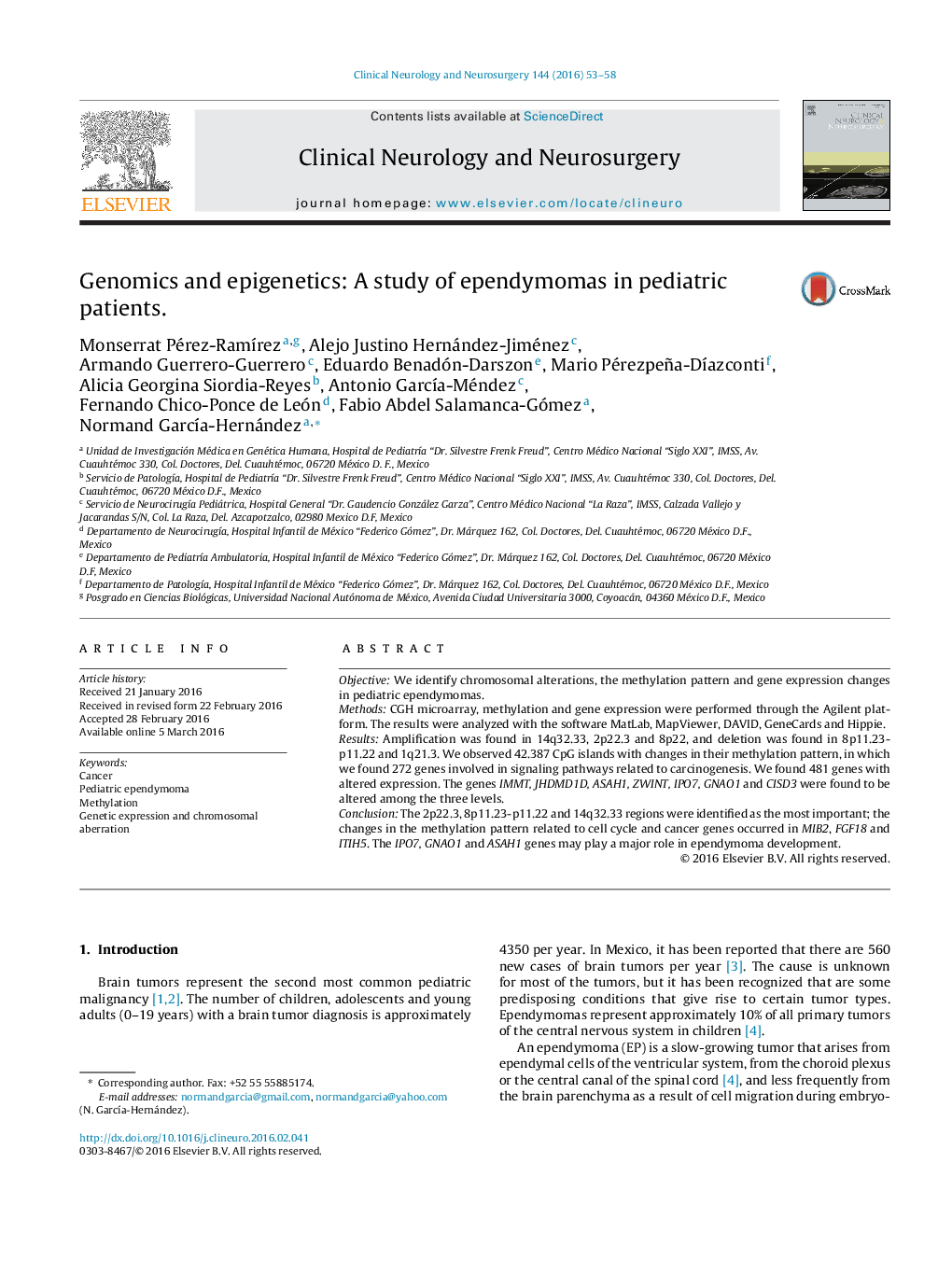| Article ID | Journal | Published Year | Pages | File Type |
|---|---|---|---|---|
| 3039489 | Clinical Neurology and Neurosurgery | 2016 | 6 Pages |
•ASAH1 and GNAO1 play important role during the formation of pediatric EP.•It suggests that pediatric ependymoma share a methylation pattern.•Chromosome 2p, 14q are likely to show chromosomal abnormalities in pediatric EP.
ObjectiveWe identify chromosomal alterations, the methylation pattern and gene expression changes in pediatric ependymomas.MethodsCGH microarray, methylation and gene expression were performed through the Agilent platform. The results were analyzed with the software MatLab, MapViewer, DAVID, GeneCards and Hippie.ResultsAmplification was found in 14q32.33, 2p22.3 and 8p22, and deletion was found in 8p11.23-p11.22 and 1q21.3. We observed 42.387 CpG islands with changes in their methylation pattern, in which we found 272 genes involved in signaling pathways related to carcinogenesis. We found 481 genes with altered expression. The genes IMMT, JHDMD1D, ASAH1, ZWINT, IPO7, GNAO1 and CISD3 were found to be altered among the three levels.ConclusionThe 2p22.3, 8p11.23-p11.22 and 14q32.33 regions were identified as the most important; the changes in the methylation pattern related to cell cycle and cancer genes occurred in MIB2, FGF18 and ITIH5. The IPO7, GNAO1 and ASAH1 genes may play a major role in ependymoma development.
